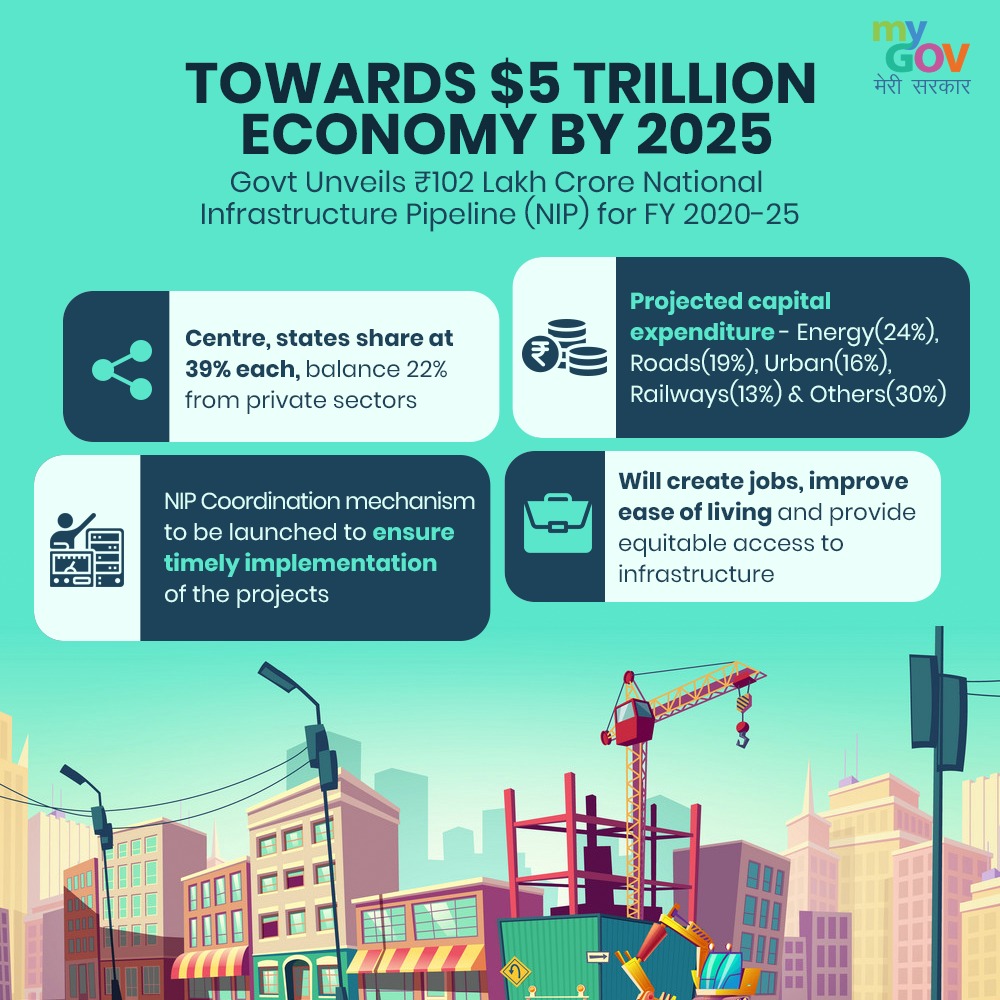Note4Students
From UPSC perspective, the following things are important :
Prelims level: Pradhan Mantri Garib Kalyan Ann Yojna.
Mains level: India's ambitious pursuit of a $5 trillion GDP by 2028
Central idea
The article critically examines India’s ambitious pursuit of a $5 trillion GDP by 2028, juxtaposing it with Japan’s economic trajectory. It highlights concerns about wealth disparity, inclusivity in high-tech sectors, and questions the impact on marginalized citizens.
Key Highlights:
- Extension of Welfare Scheme: Prime Minister Modi’s announcement to extend the Pradhan Mantri Garib Kalyan Ann Yojna by five years.
- Concerns about Hunger: Raised concerns about persistent hunger despite the ambitious target of achieving a $5 trillion GDP by 2028.
- Japan’s Economic Challenges: Comparison with Japan’s economic growth and the social challenges faced, including suicide rates and social withdrawal.
- Reliance on GDP Growth: Emphasis on India’s economic growth relying on capital, productivity, and labor.
- Wealth Disparity: Identification of significant wealth disparity, with 1% of the population owning a substantial portion of the nation’s wealth.
- Government’s Economic Tools: Government’s identification of sectors and tools, such as the digital economy, fintech, and climate change initiatives.
Key Challenges:
- Impact on Marginalized Citizens: Expressing concerns about the potential adverse impact on marginalized citizens in the race towards a $5 trillion economy.
- Wealth Inequality: Highlighting the wealth disparity issue, with 1% of the population owning a significant portion of the nation’s wealth.
- Inclusivity in High-Tech Sectors: Concerns about the ability of a large segment of the population to participate in cutting-edge sectors such as AI, data science, and fintech.
- Lack of Per Capita Income Estimates: Criticism regarding the absence of estimates on India’s per capita income at the $5 trillion GDP mark.
Key Terms and Phrases:
- Pradhan Mantri Garib Kalyan Ann Yojna: Specific welfare scheme providing free foodgrains.
- Hikikomori: Term referring to severe social withdrawal in Japan.
- Kodokushi: Japanese term for lonely deaths.
- GST (Goods and Services Tax): Mention of the significant contribution from the bottom 50% of the population.
- Inclusive Growth: Government’s emphasis on growth that includes all segments of society.
- Insolvency and Bankruptcy Code: Part of the identified tools for achieving the $5 trillion goal.
- Make in India: Mention of one of the identified sectors for economic growth.
- Start-Up India: Highlighting a sector emphasized for achieving economic targets.
- Production Linked Incentives: Part of the government’s strategy for economic growth.
Key Examples and References:
- Japan’s Societal Challenges: Referring to suicide rates, social withdrawal, and lonely deaths in Japan as examples.
- Wealth Distribution Statistics: Citing wealth distribution statistics from Oxfam.
- Minister Chaudhri’s Identification: Referring to the government’s identification of tools and sectors for achieving the $5 trillion goal.
- Per Capita Income Comparison: Comparing per capita income between Japan, China, and India.
Key Facts and Data:
- Welfare Scheme Extension: Mentioning the extension of the Pradhan Mantri Garib Kalyan Ann Yojna.
- Japan’s Economic History: Referring to Japan’s economic history and challenges post-2008.
- Wealth Distribution Data: Citing wealth distribution data from Oxfam.
- GST Contribution: Highlighting the significant contribution of different income groups to GST.
Critical Analysis:
- Societal and Economic Impact: Analyzing the potential impact of the $5 trillion goal on marginalized citizens and society.
- Wealth Disparity and Inclusive Growth: Critical evaluation of wealth distribution and the need for inclusive economic policies.
- Capability Mismatch: Examining the mismatch between targeted sectors/tools and the capabilities of a significant population segment.
- Per Capita Income Concerns: Critically assessing the absence of estimates on per capita income and concerns about the inequality index.
Way Forward:
- Addressing Wealth Disparity: Emphasizing the need to address wealth disparity through inclusive economic policies.
- Ensuring Inclusive Growth: Focusing on ensuring that economic growth benefits all segments of the population.
- Skill Development and Education: Highlighting the importance of skill development and education to enable participation in emerging sectors.
- Regular Assessment and Recalibration: Emphasizing the need for regular assessment and recalibration of economic goals to align with societal well-being.
Get an IAS/IPS ranker as your 1: 1 personal mentor for UPSC 2024


